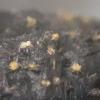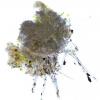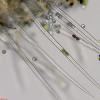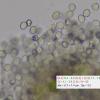
08-12-2025 18:59
 Lothar Krieglsteiner
Lothar Krieglsteiner
.. found by a seminar-participant, I do not know t

08-12-2025 21:04
Mark Stevens"Hello everyone,I'm relatively new to microscopy (

08-12-2025 17:37
 Lothar Krieglsteiner
Lothar Krieglsteiner
20.6.25, on branch of Abies infected and thickened

07-12-2025 16:07
Arnold BüschlenHallo, ich habe in einer Moos-Aufsammlung (epiphy

16-03-2014 22:00
Hello,I found this species a few months ago but ha

08-12-2025 13:39
Thomas Læssøehttps://svampe.databasen.org/observations/10572899

05-12-2025 17:33
 Bruno Coué
Bruno Coué
Bonjour, je serais heureux de recueillir votre avi
Trichobolus
Margot en Geert Vullings,
06-09-2023 12:29
The length of the setae points to T. zukalii, but the spore size is not quite right?
Spores 8.7 x 7.4 µ with Bary bubbles.
Only fruit bodies full of spores were found, no asci.
Setae length on average 350µ
Identification Ellis&Ellis.
Is this T. zukalii?
Thanks in advance, Margot
Hardware Tony,
08-09-2023 10:44

Re : Trichobolus
Hello Margot,
your description fits best with T. zukalii to known other species that I can find. The ascus is almost the whole fruit body itself containing all the spores ranging from 1000 > 4000 sometimes depending on age. The setae fits well. This could also be the reason why your spores are slightly smaller but I suggest within range. The odd thing about these species is that Paul Cannon (Kew) states that this and other close species do not have deBary bubbles or oil spots etc. Perhaps there is a easy explanation for this but I am not aware. see:
https://fungi.myspecies.info/all-fungi/trichobolus-zukalii
I assume the examination was made with water as meltzers seem to expand the size of the spores.
regards
your description fits best with T. zukalii to known other species that I can find. The ascus is almost the whole fruit body itself containing all the spores ranging from 1000 > 4000 sometimes depending on age. The setae fits well. This could also be the reason why your spores are slightly smaller but I suggest within range. The odd thing about these species is that Paul Cannon (Kew) states that this and other close species do not have deBary bubbles or oil spots etc. Perhaps there is a easy explanation for this but I am not aware. see:
https://fungi.myspecies.info/all-fungi/trichobolus-zukalii
I assume the examination was made with water as meltzers seem to expand the size of the spores.
regards
Margot en Geert Vullings,
09-09-2023 19:19
Re : Trichobolus
Thanks Tony for the answer.
The measurements were carried out in water.
I read on this site that some varieties do have deBary bubbles, but I cannot find which species:
https://fungi.myspecies.info/all-fungi/trichobolus
The measurements were carried out in water.
I read on this site that some varieties do have deBary bubbles, but I cannot find which species:
https://fungi.myspecies.info/all-fungi/trichobolus
Kind regards, Margot
Hardware Tony,
09-09-2023 20:26

Re : Trichobolus
I foumd this article that provides a key to Trichobolus plus others. Hope this helps.
Tony
https://www.mycosphere.org/pdf/MC3_4_No13.pdf
Tony
https://www.mycosphere.org/pdf/MC3_4_No13.pdf
Norbert Heine,
09-09-2023 22:10

Re : Trichobolus
Hello Margot and Tony,
I know Trichobolus zukalii from nearly 50 finds and T. sphaerosporus from more than 10! In my opinion the best way for separation is the spore quotient. It is in middle 1,19 for zukalii and 1,07 for sphaerosporus (Doveri, FFI, 2004).
Regards, Norbert
I know Trichobolus zukalii from nearly 50 finds and T. sphaerosporus from more than 10! In my opinion the best way for separation is the spore quotient. It is in middle 1,19 for zukalii and 1,07 for sphaerosporus (Doveri, FFI, 2004).
Regards, Norbert
Margot en Geert Vullings,
10-09-2023 13:46
Re : Trichobolus
Thank you both.
Tony, the key also takes you to T. zukalii.
Norbert, our spore quotiënt is 1.1 x 1.2 ( foto 4) this also points most to T. zukalii? Have you seen the Bary bubbles during these 50 observations?
Kind regards, Margot
Michel Delpont,
10-09-2023 16:40

Re : Trichobolus
Hello Margot
Same opinion as Norbert; what did you prepare for?
Michel.
Margot en Geert Vullings,
10-09-2023 16:53
Re : Trichobolus
Sorry Michel, I don't understand what you mean by "what did you prepare for"?
Kind regards, Margot
Michel Delpont,
10-09-2023 17:57

Re : Trichobolus
Excuse me, what liquid (only water?) do you use to make your Trichobolus preparations. Some can cause artifacts and modify certain details (this about spores and Bary's bubbles).
Michel.
Margot en Geert Vullings,
10-09-2023 19:28
Re : Trichobolus
Tony also asked the same in the first answer :) everything was viewed and measured in water.
Margot
Norbert Heine,
10-09-2023 20:01

Re : Trichobolus
"Have you seen the Bary bubbles during these 50 observations?"
Yes, I did. But only on dried material, which was re-moisturized. The bubbles were thick-walled, just like you show.
Regards, Norbert
PS. Also I notized: Spores 8,5-9 x 6-7,5 µm when unripe!
Margot en Geert Vullings,
11-09-2023 08:44
Re : Trichobolus
"Yes, I did. But only on dried material, which was re-moisturized. The bubbles were thick-walled, just like you show".
This could very well be the explanation, because this could also have happened in nature before I found it.
Thanks and kind regards,
Margot





